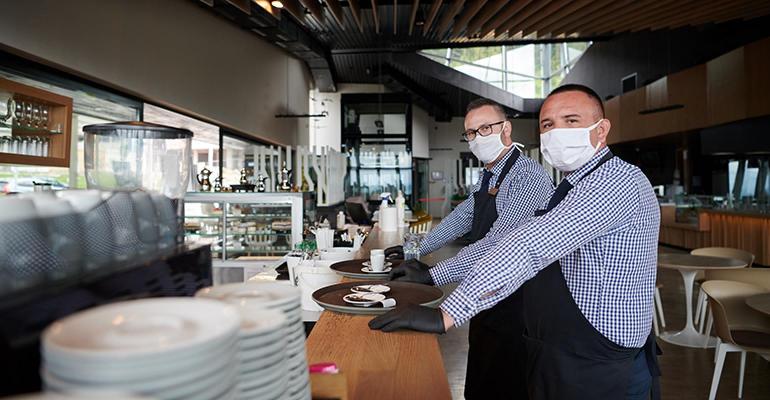Last Friday, Nation’s Restaurant News reported that the U.S. Small Business Administration released a list of the 100,004 foodservice businesses that received the $28.6 billion in grants set aside for the first round of the Restaurant Revitalization Fund, following a Freedom of Information Act request from the Independent Restaurant Coalition.
NRN combed through the data to uncover who received the top grants, what percentage of recipients were in a priority group (women, veteran or socioeconomically disadvantaged-owned) and more. Here’s what we found:
The largest RRF grants went to wedding venues, airport concessions, and more non-traditional businesses
According to the data provided by the SBA, 67 businesses received a $10 million RRF grant: the most money a business entity could receive, according to the rules originally laid out by the SBA. These 67 businesses include:
- Lucky Strike Entertainment, a 16-unit bowling alley chain
- Windsor Hospitality, a 10-unit Marriot/Embassy Suites hotel management company
- The foodservice establishments within the France pavilion, a themed land in Walt Disney World, Fla.
- Sweet Hospitality Group, a concessions company for Broadway theaters
- 15 wedding venues and caterers
- Two Golden Corral franchisees
- 8 airport and sports venue concessions companies and restaurants
- Panera Bread, McDonald’s, and Dunkin franchisees
- A New Orleans restaurant operations group that operates in hotels
The Independent Restaurant Coalition already raised the alarm on some of these non-food establishments that received grants, calling out the “number of ineligible businesses” that received grants according to the data dump when “Congress clearly spelled out that only eating-and-drinking places should qualify for relief.”
“The SBA takes fraud seriously and while the agency cannot comment on specific cases, the SBA is working with the Office of the Inspector General to provide information to look into any potential cases of fraud,” a spokesperson for the SBA told Nation’s Restaurant News. “The SBA encourages anyone suspecting fraud or misuse of relief programs to report it here.”
Several nontraditional businesses and larger franchisees also received grants within the $5 million to $10 million category (businesses could only receive a maximum of $5 million per location) including:
- Multiple events spaces
- Multiple airport concessions companies
- Historic Hotel in Bethlehem, Penn.
- Franchisees of Jimmy John’s, Panera Bread, Five Guys Burgers and Fries, Dunkin’, Buffalo Wild Wings and Chuck E Cheese
The SBA also apparently released incorrect data when it first posted the list of grant recipients, and accidentally included restaurant recipients who had had their previously approved funds rescinded (the first list included 406 “extra” recipients who were then deleted from the data when it was uploaded a second time due to “technical errors.”)
Several well-known restaurants received large grants
Several larger and more famous restaurant groups received larger RRF grants of more than $1 million, including:
- Momofuku Restaurant Group: $6.8 million
- Mighty Quinn’s Barbecue (4 units): $5.8 million
- Peter Luger Steakhouse: $5 million
- Amy’s Bread: $5.3 million
- PJ Clarke’s: $5 million
- Alinea: $2.2 million
- Atelier Crenn: $2 million
Less than one-third of the largest grants were received by prioritization groups
According to the data provided by the SBA, just under one-third — or 22 out of the 67 largest grant recipients — were from one or more of the original prioritization groups. The SBA originally prioritized women, socially disadvantaged people and veterans before being hit with multiple lawsuits that forced them to halt prioritization and rescind previously approved funds.
In moving down the list, approximately 40% of businesses that received grants of $5 million or more were in the priority groups.
Less than 10% of total grants went to non-priority businesses
According to the SBA data, despite the legal backlash against the SBA prioritizing certain demographics, only 6.7% (6,758) of the 101,006 RRF grants distributed went to business owners that were not in any of the priority groups. In total, 34% of the total grants were distributed to businesses owned by socioeconomically disadvantaged persons, almost 44% went to women-owned businesses and 5.7% were distributed to businesses owned by veterans.
With additional reporting by Lisa Jennings
Contact Joanna at [email protected]
Find her on Twitter: @JoannaFantozzi





